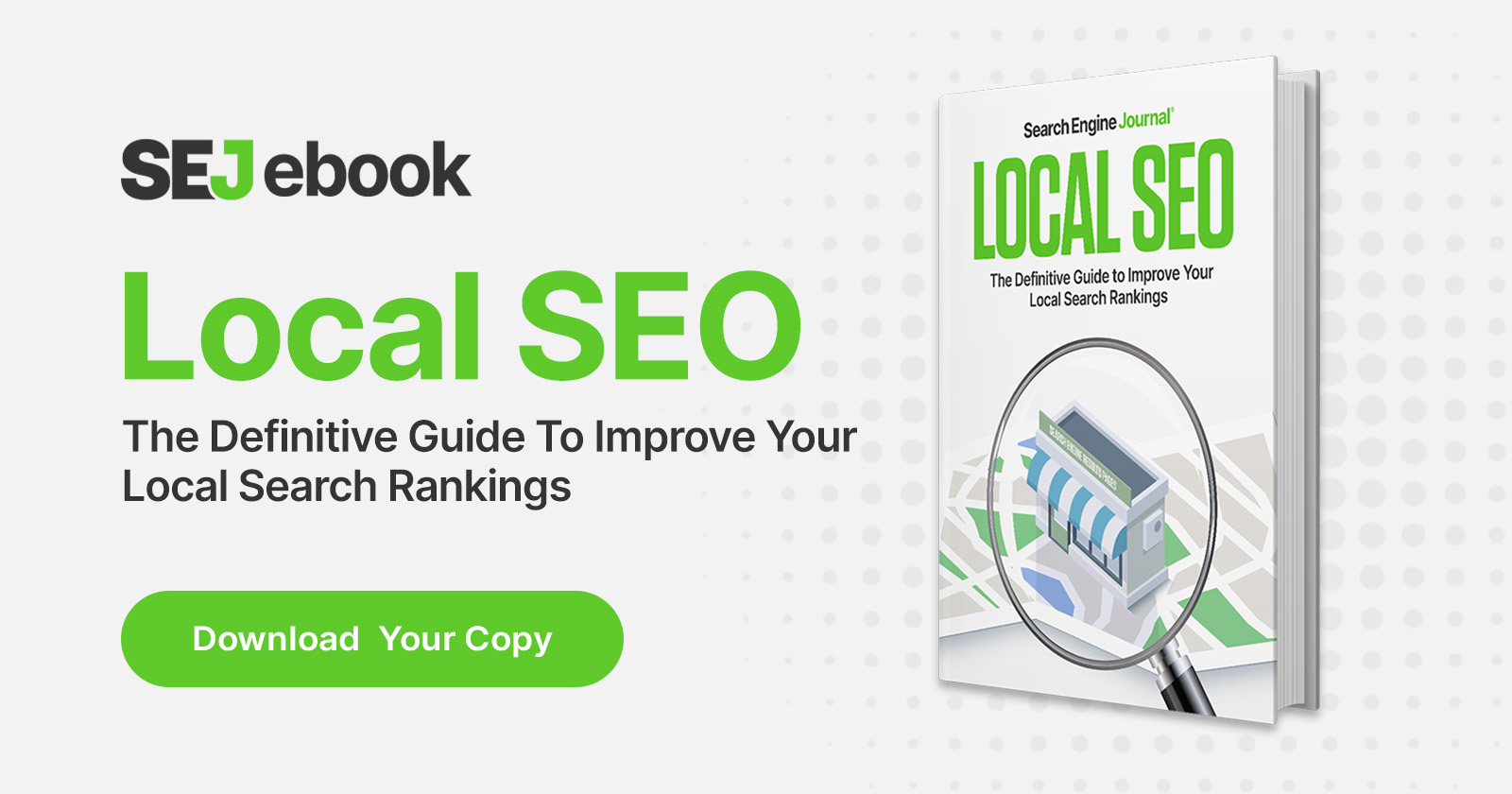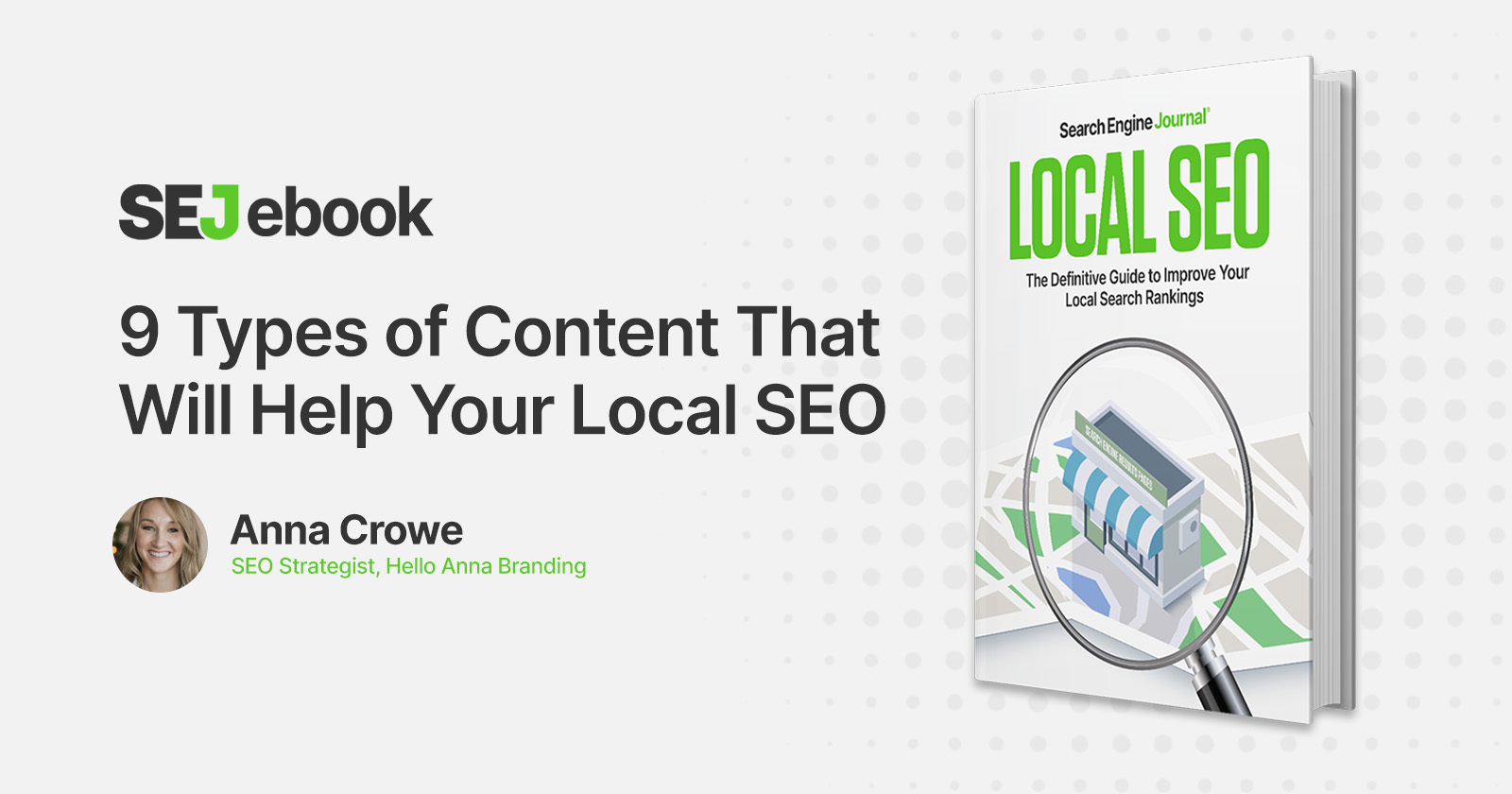
I’ve spent more hours than I care to admit searching for the best Mexican food, thumbing through Instagram posts, and picking the brain of local bloggers.
In pursuit of my Pride Rock moment holding the king of tacos, I always return to Google.
When I’m perusing through Google, I’m served Google Business Profile, Google Map, and local review information.
Sadly, local websites are pushed down further and further in the local SERPs.
In 2020, more than 65% of all Google searches resulted in the user getting the information they needed from the search results page.
That number grew from 50% in 2019.
Your website plays second fiddle to Google Business Profile and other Google search result features now.
Back in the day, ranking for local SEO used to be pretty straightforward. You’d add your NAP to the footer, build a few directory links, and voila! You were on your way to the local 7-pack.
Somewhere along the line, the 7-pack reduced to a 3-pack and local directory links are no longer enough.
To move up the ranks in local SEO search results and compete with zero click results, you need rich local content.
Don’t believe me? Seoreseller.com increased traffic by almost 300% by creating custom local content.
And, they aren’t alone.
Search Geek Solutions saw a 300% increase in organic visibility for Bloomfield Dental Designs by developing local content.
By creating rich local content, you can rank for less competitive, local keywords.
To help you keep your website up-to-date with local content and fuel your local SEO strategy, I listed nine different types of local content here that I welcome you to recreate within your own business.
But first…
What Is Local SEO Content?
Local SEO content consists of text, images, and even video designed to meet the needs of local searchers. It can appear on your website, on local landing pages, on your Google Business Profile, and more.
If you’re a local business targeting a specific area or zip code, all the content on your website is aimed at local residents.
Let’s be clear – there is no local SEO content magic bullet that will instantly drive local foot traffic to your business.
The difference between “content” and “local content” is the search intent behind the query.
When writing, think about the local user, local entities, local semantic relationships to create a deeper connection.
It’s more than simply matching local-based keywords to your blog content. When done correctly, it works.
Exposure Ninja increased keyword visibility by 900% after two years of producing local-focused blog content for an accounting firm.
And Dallas SEO Dogs removed old-school keyword stuffing and beefed up thin content for a local bar, HIDE, to boost organic traffic by 72%.
So…
How Do You Write Local SEO Content?
If Willy Wonka got in touch with his SEO side and opened up a local SEO agency instead of a chocolate factory, he still wouldn’t produce local SEO content. There is no Golden Ticket to be won for writing local SEO content.
But search engines give a few hints to help your content rank in local search results. Here are four proven tips for writing local SEO content.
1. Use Schema Markup
As Google search results get richer and more interactive, schema becomes more critical. Schema helps algorithms understand how content relates to one another.
By adding schema markup to your local business, authors, etc., you highlight expertise and authority.
2. Sprinkle Local Phrases In Your Content
While local keyword research is essential to map out your content, it’s even more important to understand how the topic guiding those keyword phrases fits in.
If you take a step back and think about your business as a whole while sprinkling in local mentions, you will see success with local SEO content.
Take Kanuka Digital and their work with PlumbGas, for example.
Kanuka Digital optimized main navigation pages, meta titles, and meta descriptions for key local phrases to boost goal conversions by 400% in the first month.
3. Write As You Talk
Voice search is nothing new to local SEO. In fact, 75% of people who own smart speakers use them to search for local businesses weekly.
If you write with a conversational tone, you can target those longer voice search queries in the SERPs.
4. Images Are Your Unsung Hero
Images often go unnoticed when it comes to local SEO. But with mobile search leading the way, you want to optimize your images for mobile search.
By incorporating unique images (not stock photos) in a square format with proper alt text and schema markup, you have a better chance of ranking in mobile search for local.
Don’t rely on stock. Use engaging, original images that complement the rest of your content and help tell a more compelling story.
9 Examples Of Content For Local SEO
1. City-Specific Landing Page
Here’s a fun challenge: Can you rank for local keyword terms without a location webpage?
While you might succeed after a few sleepless nights, it’s much easier to rank in the local SERPs if you’ve got a location webpage.
If you’re a multi-location local business, take a note from Denny’s.
They created a separate page for each location. Here is a look at Denny’s New Port Richey, Florida location page.
Jeni’s Splendid Ice Creams is another excellent example. You can see Jeni’s talks about local landmarks, downtown areas paired with unique local images.
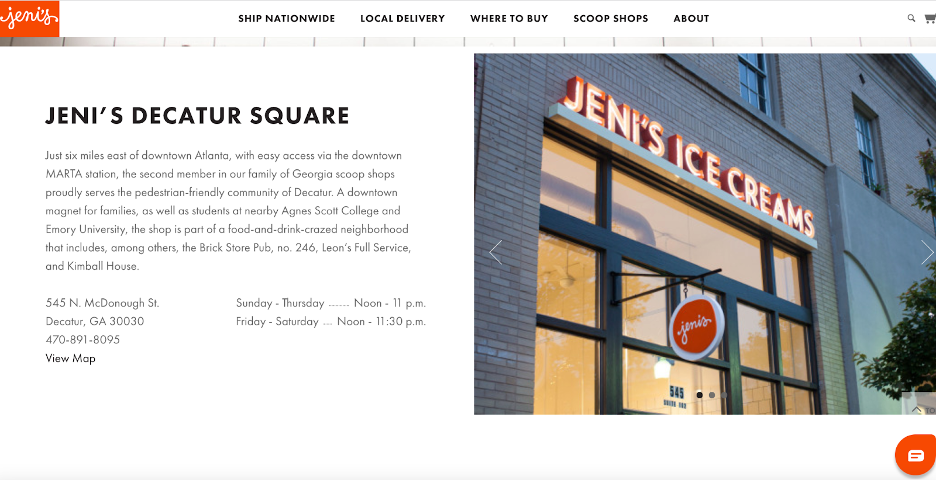 Screenshot from Jeni’s, December 2021
Screenshot from Jeni’s, December 2021And Roto-Rooter joined the game too. Here’s their New York location page.
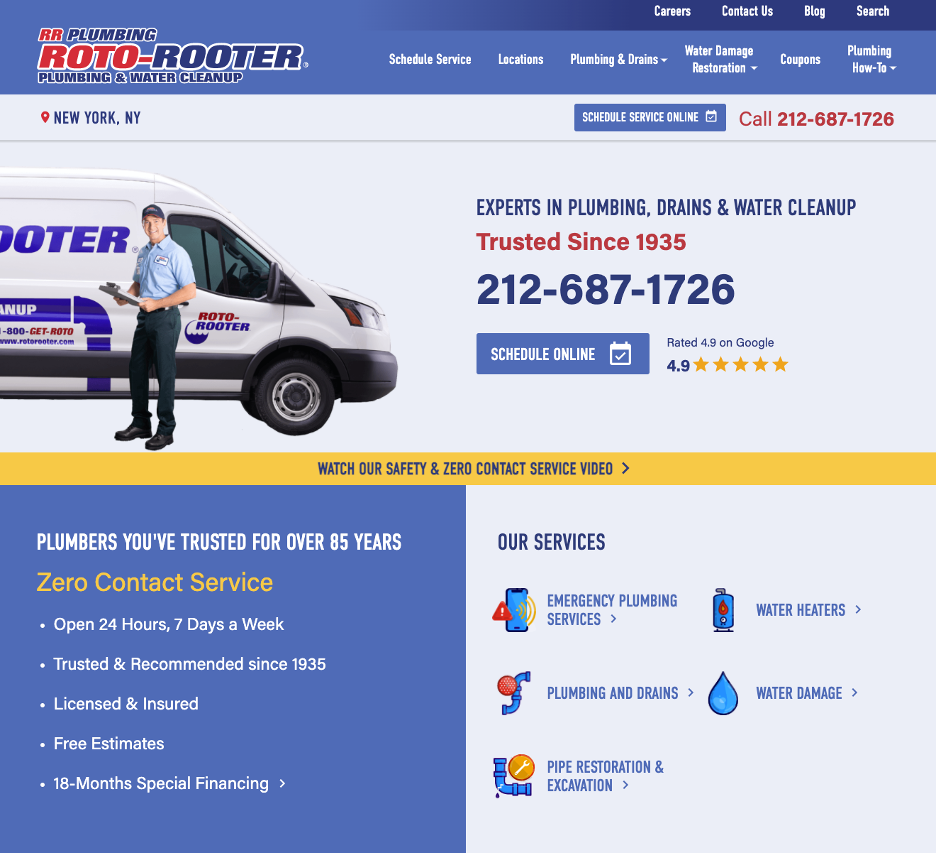 Screenshot from Roto-Rooter, December 2021
Screenshot from Roto-Rooter, December 20212. State Or Regional Landing Page
It’s hard to get any client excited about creating more content. But, when you’re competing in the local SEO space, content could make or break your move from Page 2 or 3 to Page 1.
If creating multiple city-specific location pages sounds like a daunting task, start with the city or region of your locations.
Take Airbnb’s Miami webpage, for example.
They created city-specific topical content about staying in Miami. The search intent matches the content on this page perfectly. Just keep scrolling.
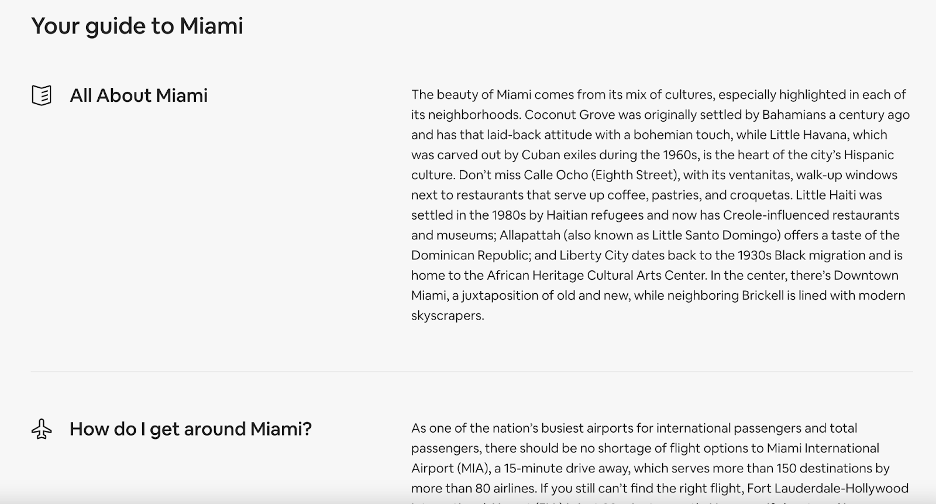 Screenshot from Airbnb, December 2021
Screenshot from Airbnb, December 2021This is one of the best examples of local content silos I’ve seen.
And, they aren’t alone.
Incfile, a LegalZoom type of company for solo entrepreneurs (but better), built state-specific pages.
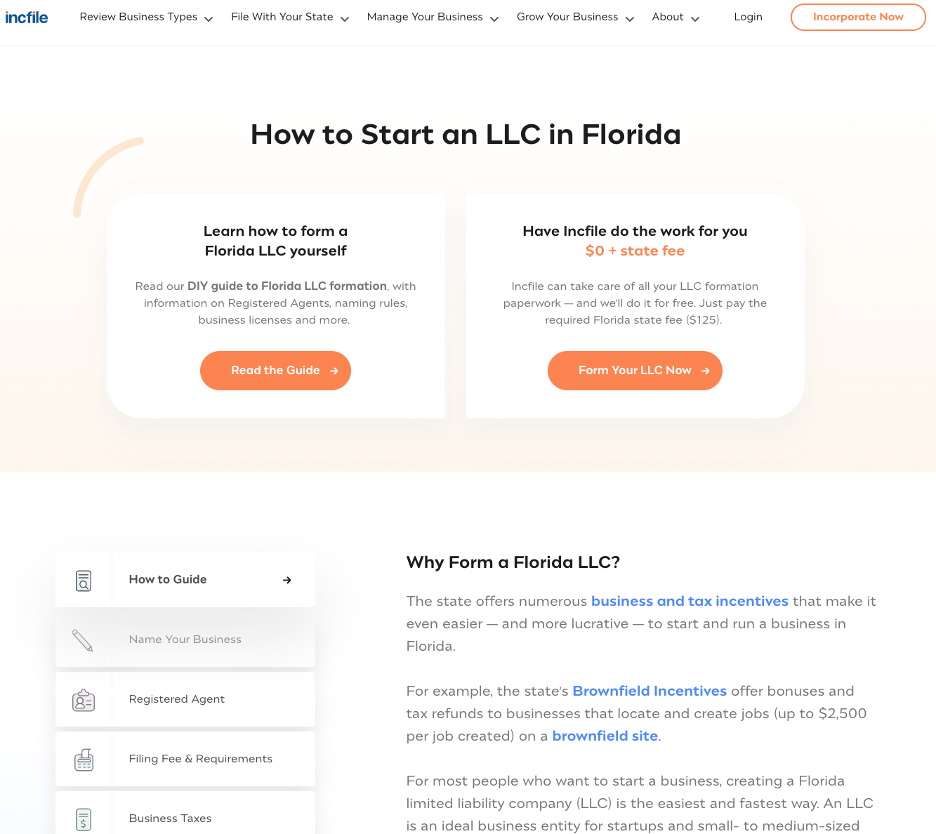 Screenshot from Incfile, December 2021
Screenshot from Incfile, December 2021(Full disclosure: Incfile was a client while working with First Page Strategy.)
Before building these state location pages, the team did a deep dive into buyer personas to understand their audience.
Incfile determined that state location pages would make the UX better for their customers – and, it worked. Incfile not only increased organic traffic but improved conversions.
3. FAQ Pages
FAQ pages are this close to being my one-stop-shop for everything local SEO content.
Here are a few examples of FAQ pages for local businesses.
Handy includes FAQs on its service pages.
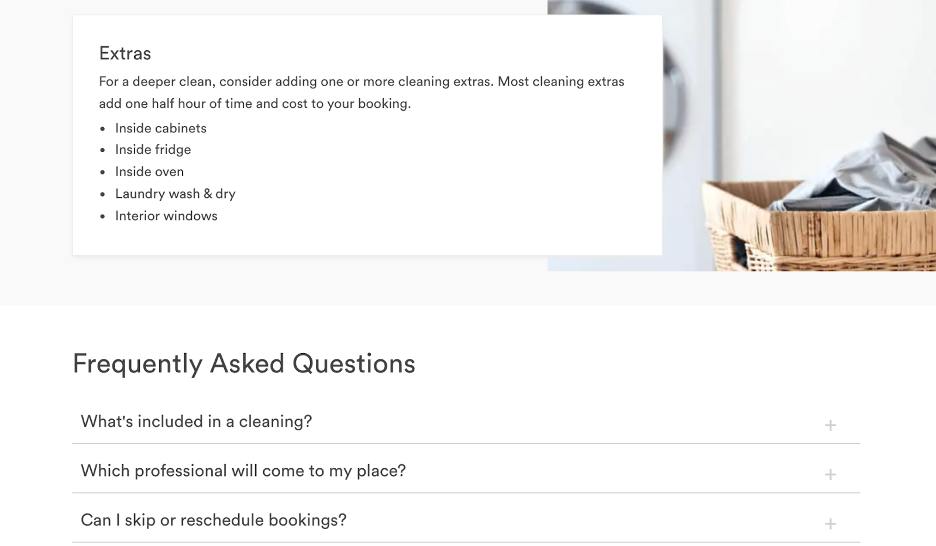 Screenshot from Handy, December 2021
Screenshot from Handy, December 2021Monterey Bay Aquarium dedicates an entire page to FAQs.
 Screenshot from Monterey Bay Aquarium, December 2021
Screenshot from Monterey Bay Aquarium, December 20214. Specials
Specials and discounts are the crème de la crème for local business owners.
In today’s smart shopper age, everyone is an extreme couponer (guilty).
Give your customers what they want by personalizing specials to local residents.
Hotels are known for this.
Hotel Chicago offers a parking package.
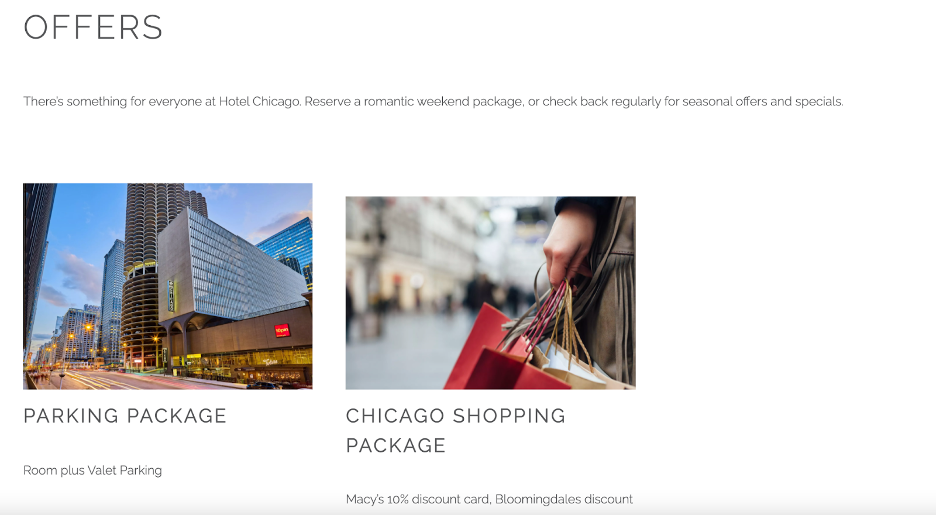 Screenshot from Hotel Chicago, December 2021
Screenshot from Hotel Chicago, December 2021And Disney has “locals only” passes and discounts.
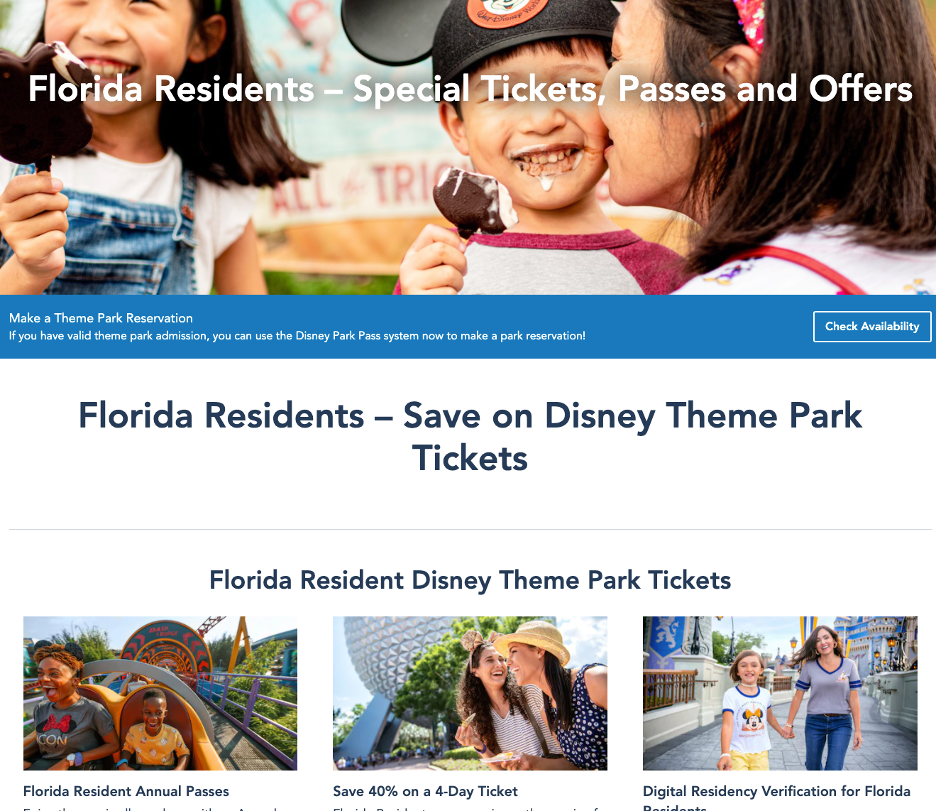 Screenshot from Disney World, December 2021
Screenshot from Disney World, December 2021By offering a location-specific discount, you’re appealing to your local audience. You’re making them feel special.
It’s an intense race to the top of the local SERPs. No discount is too small.
5. Host Local Events
Every Friday, almost like clockwork, I dig through my Facebook events to see what’s happening this weekend.
There’s always a festival, free yoga class, or some charity dog wash going on.
I love seeing local businesses use Facebook events to drive awareness as a marketer. But, what I don’t love is not seeing the event on their webpage.
Whomp whomp!
If you’re hosting a local event without announcing it on your website, you’re losing out on some major local SEO mojo.
Here’s how Antonelli’s Cheese Shop in Austin pairs its local cheese store with classes and events.
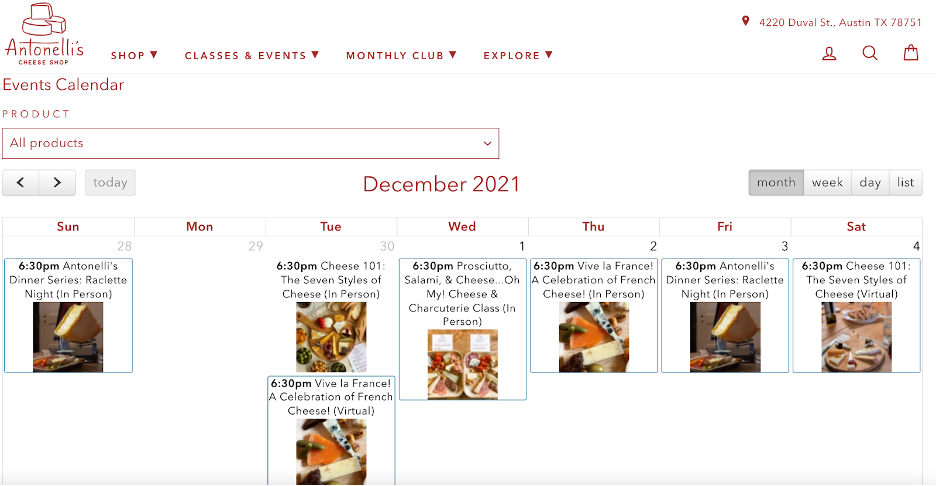 Screenshot from Antonelli’s Cheese Shop, December 2021
Screenshot from Antonelli’s Cheese Shop, December 2021Or, follow Green Bench Brewing in St.Petersburg, Florida. They host Hospitality Wednesdays.
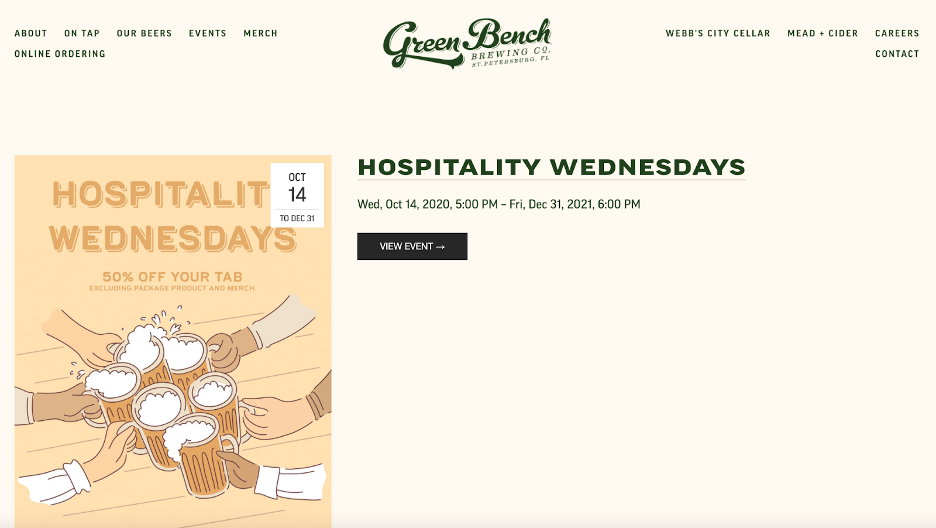 Screenshot from Green Bench Brewing, December 2021
Screenshot from Green Bench Brewing, December 2021On the flip side, you could rent out your location as an event space like Station House.
 Screenshot from Station House, December 2021
Screenshot from Station House, December 20216. Partner With Local Events Or Implement Events Calendar
Is the idea of hosting a local event too overwhelming for you – like the first time you tried to order off the dollar menu at McDonald’s? Then consider partnering with a local event.
Like Suncoast Credit Union does. They sponsored the event and provided a discount for the VIP experience.
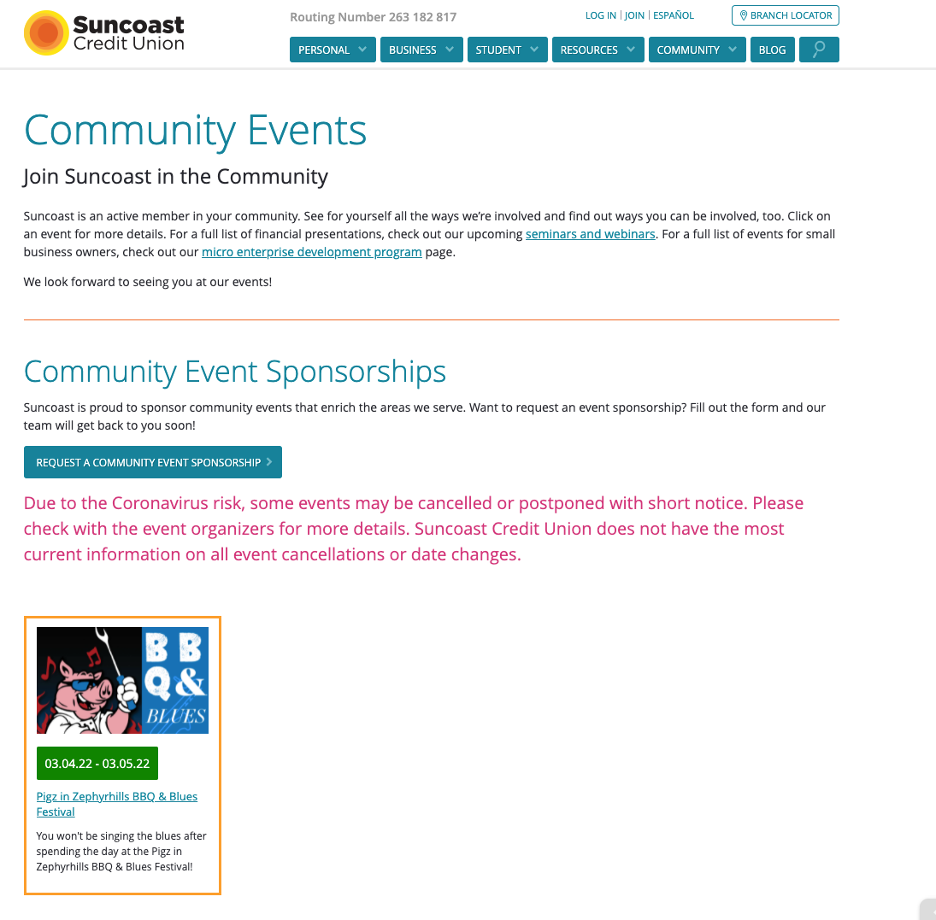 Screenshot from Suncoast Credit Union, December 2021
Screenshot from Suncoast Credit Union, December 2021Or like Marriott in Atlanta did.
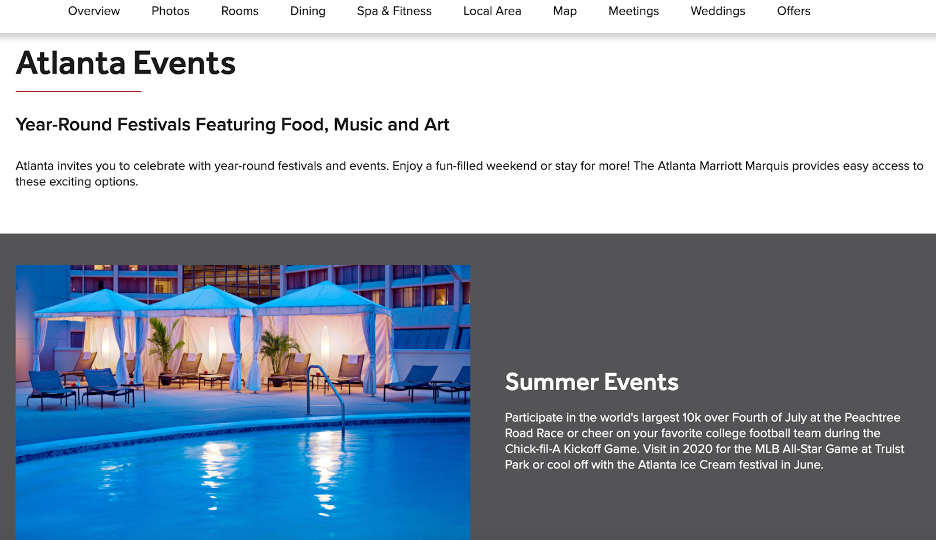 Screenshot from Marriott, December 2021
Screenshot from Marriott, December 2021And, it works. Milestone increased the organic traffic of Charley Creek Inn, a luxury boutique hotel, by 81% after improving the CMS with an Events Calendar.
If you don’t have the budget to sponsor local events, talk about the local events.
For example, New York-based digital agency LaunchMetrics put together a report on digital trends at NY Fashion Week.
 Screenshot from LaunchMetrics, December 2021
Screenshot from LaunchMetrics, December 20217. Blog Content
Blog content is where the magic happens. If you’re a local business looking to compete in the local SERPs, having an active blog will help improve rankings.
Not sure what to write? Here are a few ideas to get you started:
New Location Announcement
Jeni’s Splendid Ice Cream wrote a blog post on their new Wrigley location.
 Screenshot from Jeni’s, December 2021
Screenshot from Jeni’s, December 2021Laws
Jeffcot Law answers questions about marijuana laws in Ohio.
 Screenshot from Jeffcot Law, December 2021
Screenshot from Jeffcot Law, December 2021Product Announcements
Evergreen Home Heating and Energy shares how a new Trane product will improve Seattle home heating.
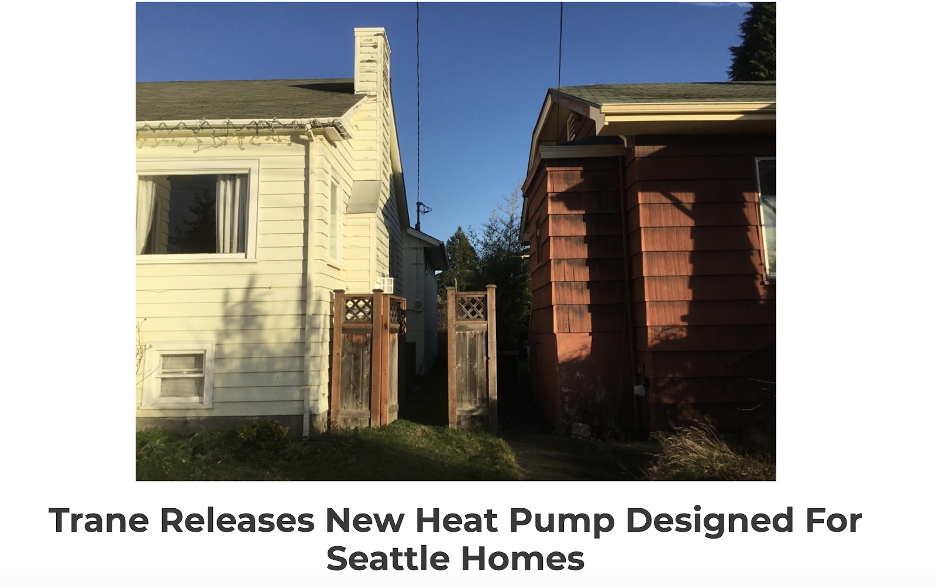 Screenshot from Evergreen Home Heating and Energy, December 2021
Screenshot from Evergreen Home Heating and Energy, December 2021Interviews & Testimonials
Asana interviews their clients that acts as a testimonial.
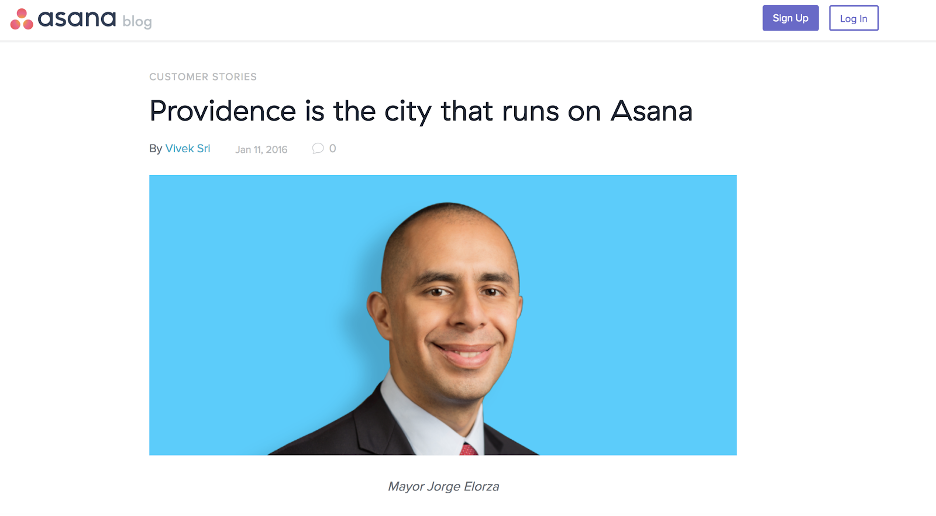 Screenshot from Asana, December 2021
Screenshot from Asana, December 20218. ‘Best Of’ Guides
When it comes to creating a “best of” list, I’d like to quote rapper T.I., “You can have whatever you like.”
With a “best of” list, you want to build a guide that gives your readers whatever they like about a topic.
Tim Capper, Director of Search at Online Ownership, created a hub of city location guides for a taxi company that helped the keyword visibility jump 99 spots in the SERPs.
These guides included downloadable Google Maps, video content with dashcam tips from taxi drivers, airport guides, and more.
For example, the Coffeebar created these amazing coffee guides.
 Screenshot from Coffeebar, December 2021
Screenshot from Coffeebar, December 20219. Press Pages
Press pages are like the Wendy’s of fast food. You know it’s there, but you rarely pay attention.
When I came across WeWork’s press page, I couldn’t help but marvel at the images of each location they had.
This local content makes me drool.
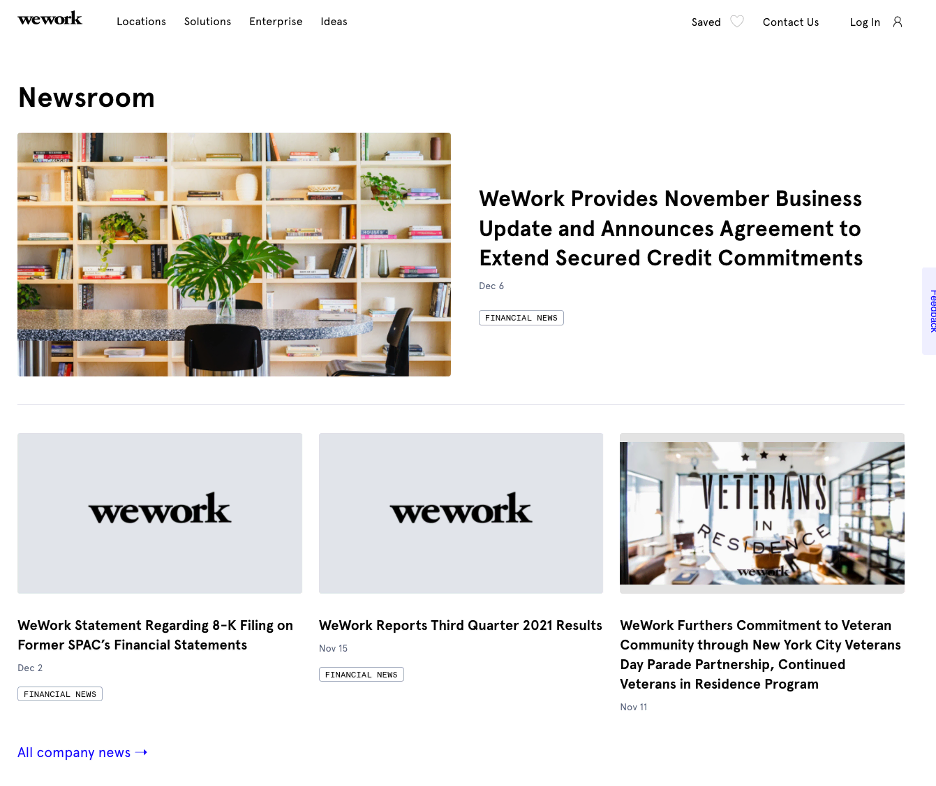 Screenshot from WeWork, December 2021
Screenshot from WeWork, December 2021Content Can Improve Your Local Search Rankings
As local algorithms change and search result features adapt to consumer behavior, local SEO has gotten a serious makeover.
From content around city-specific landing pages to press pages all centered around intent, the days of simply putting your NAP on your webpages for the sake of ranking in the map packs are a thing of the past.
So, before another day goes by publishing the same blog content since you started your business, take a read of these nine content creation ideas for your local business.
Featured Image: Paulo Bobita/Search Engine Journal

